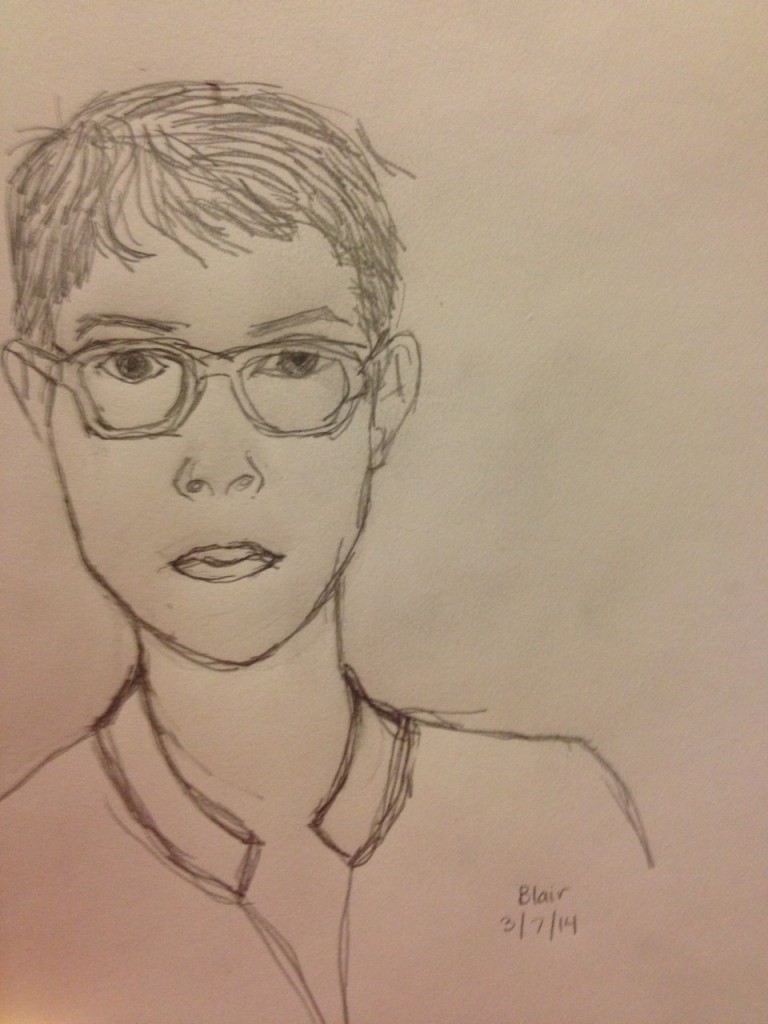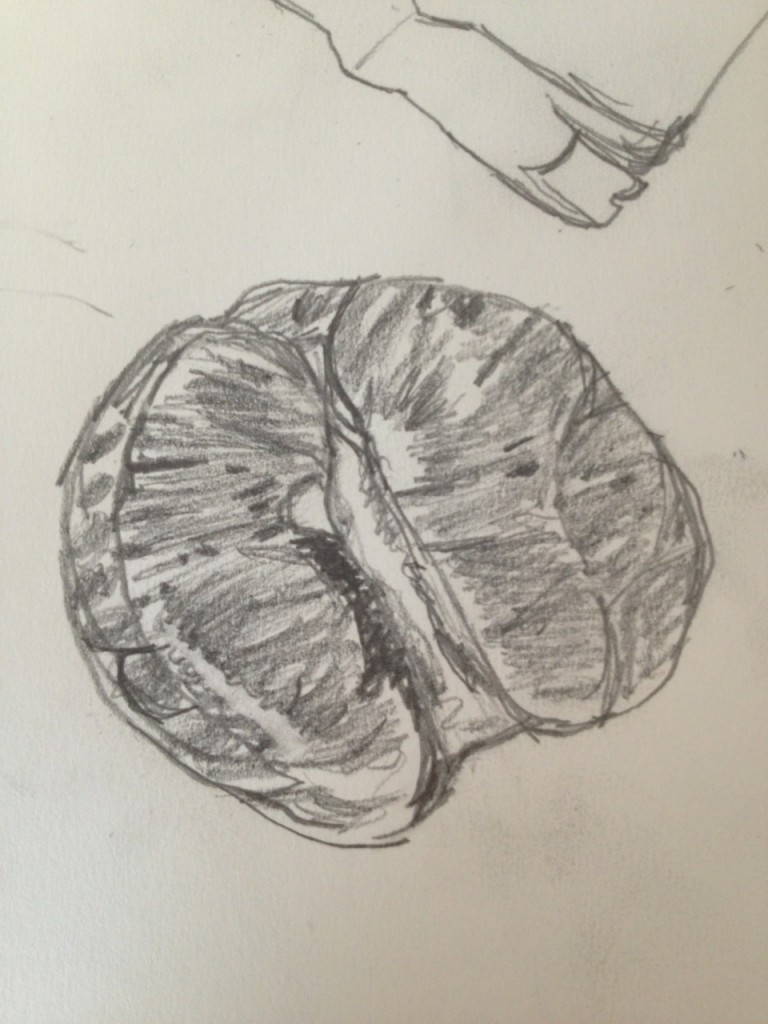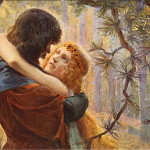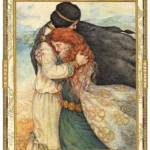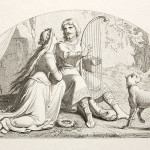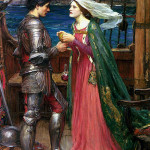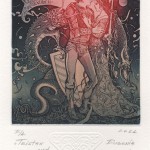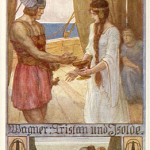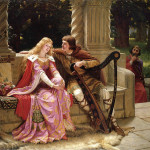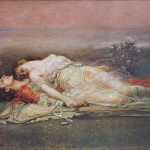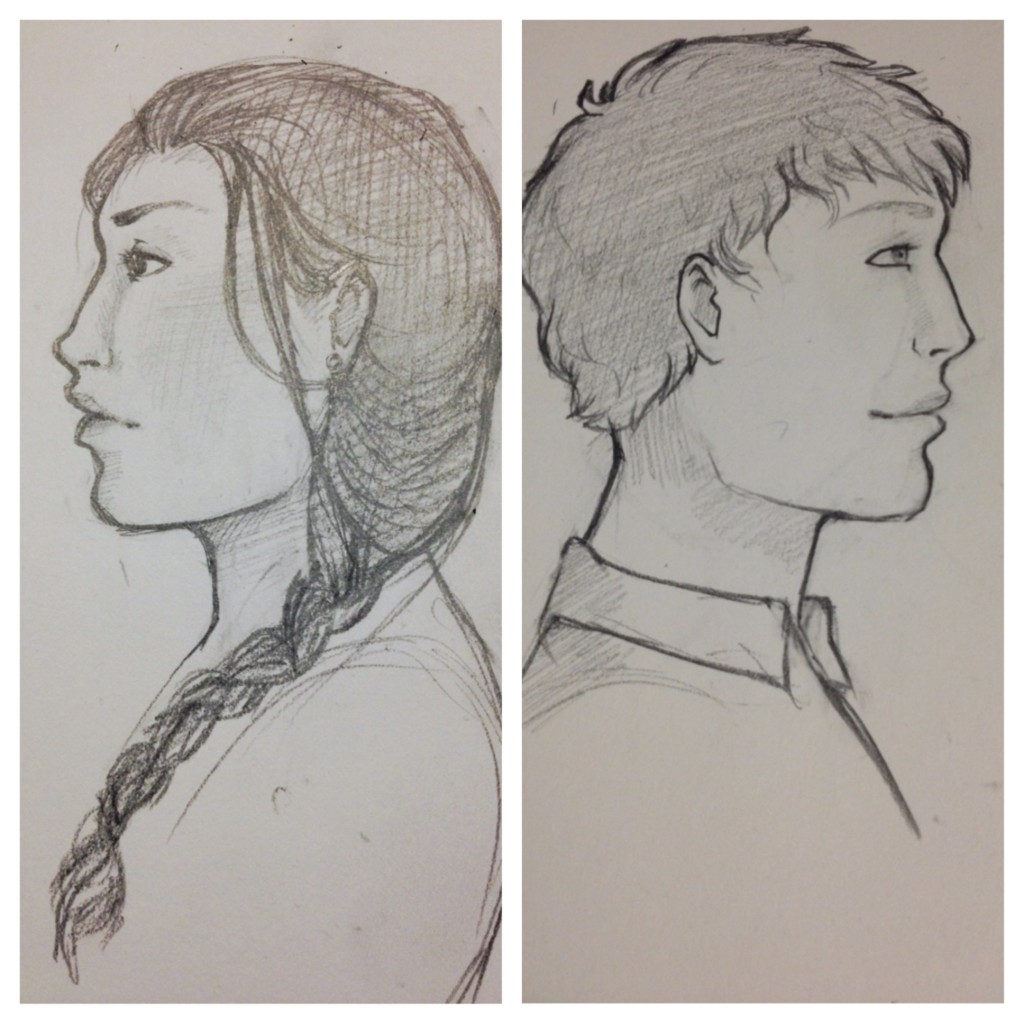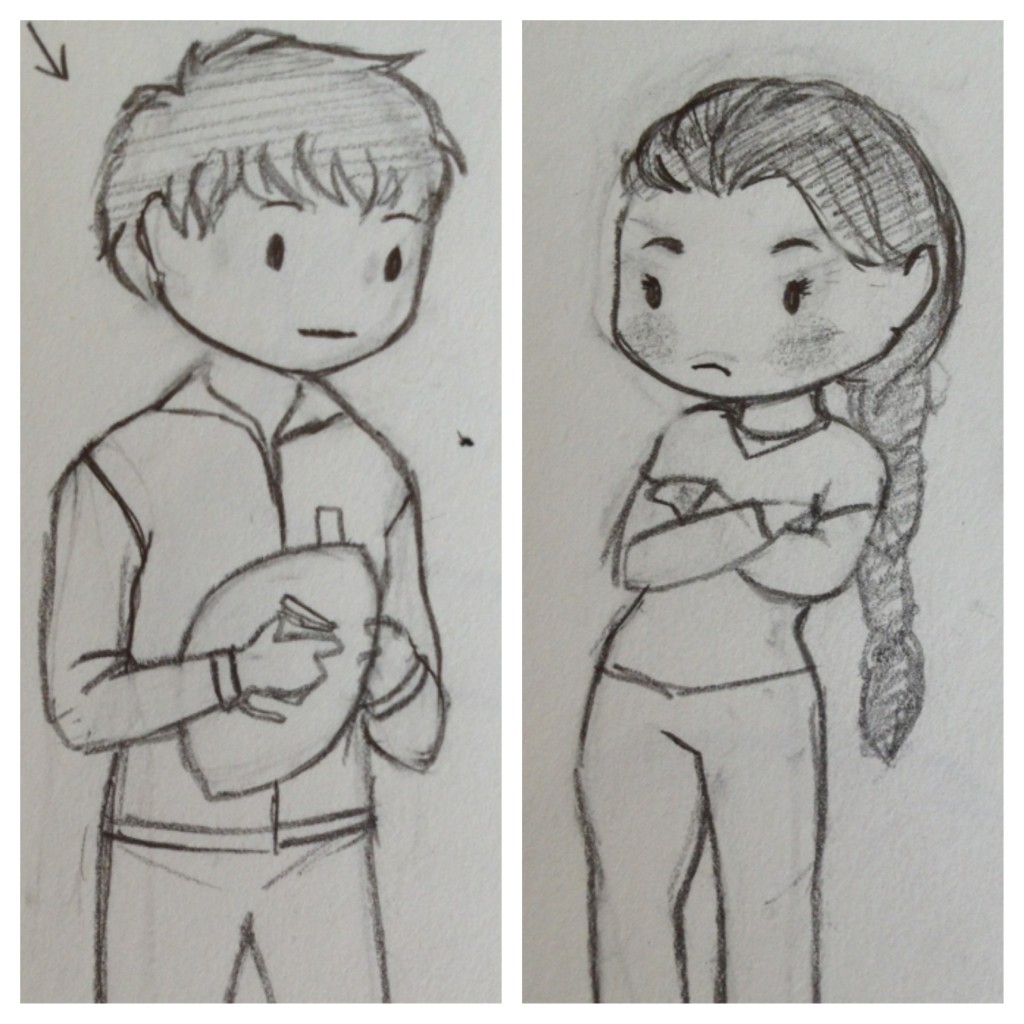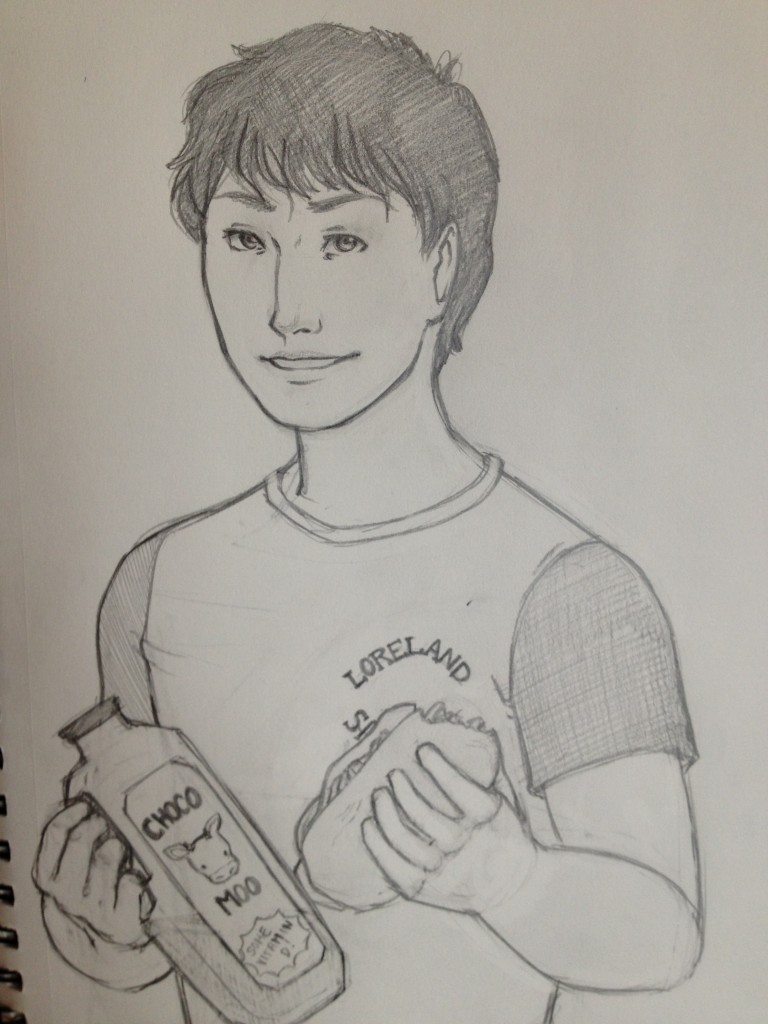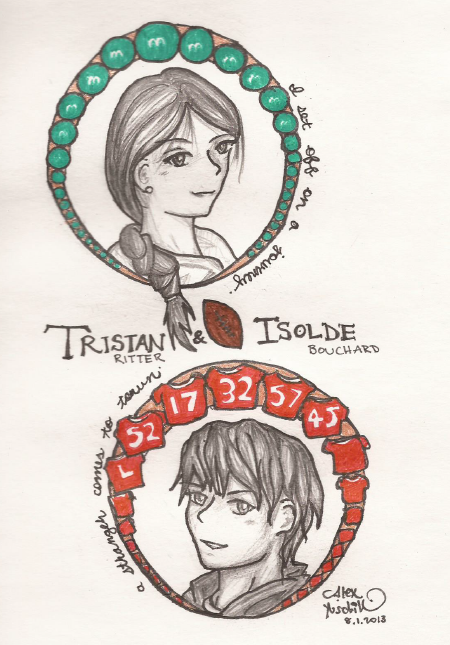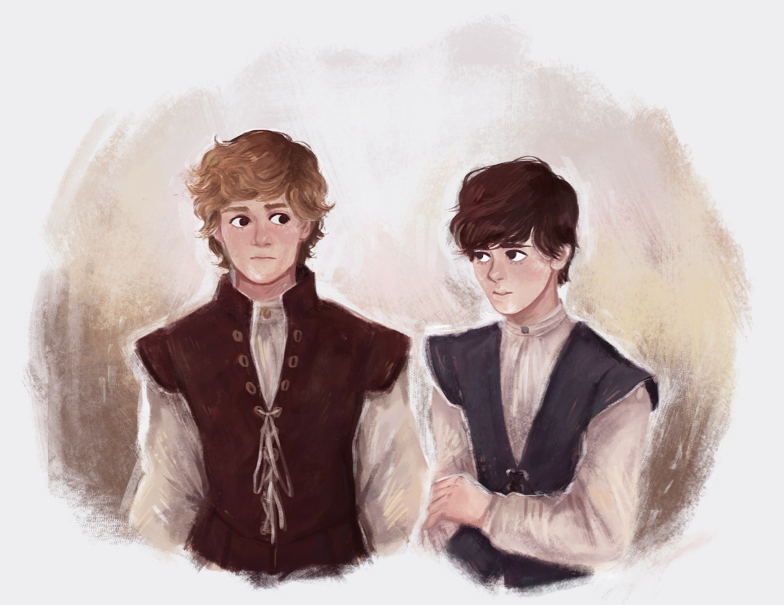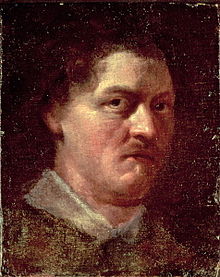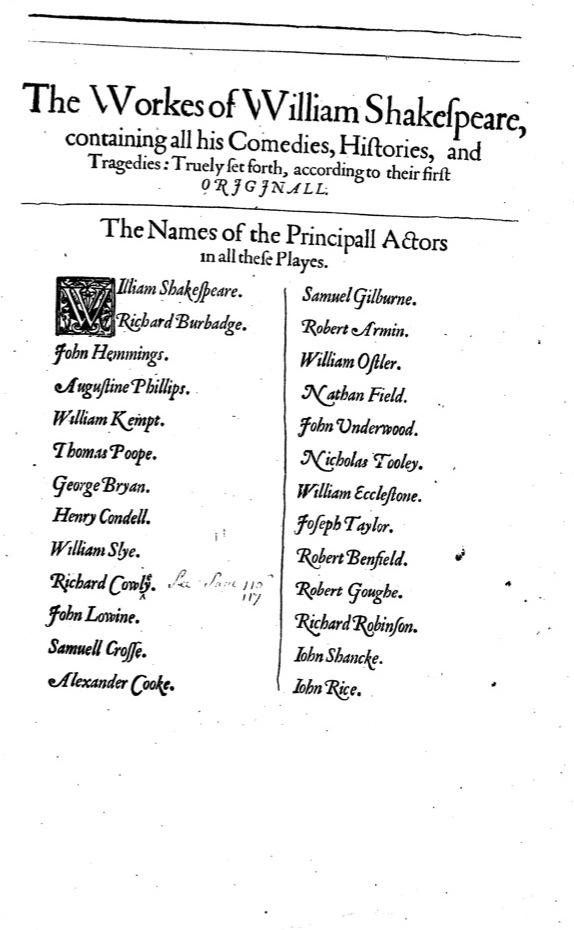I am learning to draw, and I suck.
Three weeks ago I marched myself into the art store around the corner from my office and purchased my stuff: big sketchbook. Three pencils. One eraser. One sharpener. Then I marched myself home and spent an hour squinting at myself in the mirror and drew a self-portrait.
Well. All the trusty muscles in your fingers and hands can be so amazingly goddamn slow when you haven’t used them to do the thing that you’re doing. I perch on my couch after work with whiskey and my sketchbook on my knees and drag the pencil back and forth in an attempt to render whatever’s handy: usually a literal hand, sometimes a foot, once, a grapefruit. They come out okay.
Drawing is loaded. I’m the daughter of and sister to two very talented illustrators. But I want to learn, including the part where I suck a lot, for a very simple and self-indulgent reason: I want to draw my characters.
I have a lot of high-falutin and/or flip answers to the question “what’s your first book about?” Going to Wawa! Private schools! Love as idioglossia! But the plot is this: a boy named Tristan and a girl named Isolde fall in love.
You may have gathered I am not the first to take a stab at this story. I also have gathered this, because I gathered the idea from a medieval French literature seminar in my senior year of college. There are poem and prose and operatic and James Franco movie versions of this story. It’s almost as old as stories themselves. And there are pictures.
Strictly speaking, these are not my Tristan and Isolde (you would need a beat-up Subaru and a cartoon-cloud of Quebecois swear words in the background for the Thornburghian verisimilitude). But not even my versions are fully mine. When—God willing—the words I put together end up on a printed page, that last leap from book to eyeball to brain is going to transmute them into a whole new whole couple of people. The reader does as much work as I do in creating the reality of the story; that’s just how fiction works. As Ursula K. Le Guin said: “The unread story is not a story; it is little black marks on wood pulp. The reader, reading it, makes it live: a live thing, a story.” So, too, art, or illustration (which is the best kind of art). Artists alchemize story into sight. It doesn’t matter if Tristan has a harp or a dumb Prince Valiant haircut and Isolde has oodles of blonde braids or a big ol’ crown: you can look at these pictures and Get It.
And yet! Centuries of tradition and art was not enough for me. I spent the entirety of my last family vacation at my sister’s elbow, nagging her every other second to draw me pictures. She—patient, indulgent, plied with the reminder of “remember how I’m taking both of us to France this summer you jerk”—did me a few portraits, though not without reminding me that “it’s not really fanart if it’s coerced.” My incredible critique partner Alex drew them, too–the best gift I have gotten from her, and she gives really good gifts.
Look! Look! Because you can look! You can see! I don’t know if there’s anything more incredible than the physical sight of the imaginary people you have been shoving around your mental narrative dollhouse for a year and a half. Your little black marks went up into someone else’s brain and came out as a different set of little black marks, and it all still works. The translation—which is all I’ve ever been doing with this story, anyway—was a success. The story exists in an imagination that is bigger than mine, and that’s the realest thing that could ever happen to it.
As my made-up person Dr. Bouchard would say, “Only a dull story is told only once. Memorable tales breed repetitions.”
Now I am writing a different book, and it makes me think of this quote from Susan Cooper that I love: “You can’t find a treasure map and just say ‘oh, how nice’ and put it back again.” That’s historical fiction for me—tell me one anecdote about law-flouting Elizabethan actors and I will not rest until I get 100,000 words out of it.
And I wanted to see these guys. So I’m learning to draw. Famous writers do it—Meg Wolitzer, for one, and Maggie Stiefvater, for two—and so I’m going to extrapolate outwards from a sample size of two and say this is a near-universal impulse. But I’m also impatient. And I suck at drawing (see above).
So I ordered this beautiful commission from an artist named Liv last week—explained to her who these guys are, what they look like, what their deal is—and she made it perfect. Just looking at it absolutely thrills me. THERE THEY ARE. She did in a single picture what it’s taking me tens of thousands of words to try to express—that experiential point that’s so important to a story’s success. And when my friend Becky had Liv draw Simon from her book, I was equally floored. This is witchcraft, friends. The word made flesh, or at least drawn into flesh.
But “real” gets weird when you’re dealing with, well, real people. Will Sly* really lived and really died, and the artifacts of his existence are everywhere. I can look up the Henslowe-Alleyn papers and see his name written all over stage documents. I can read the part written for him in a play where he jokes around with his fellow players—also my characters, though they’re really neither mine nor characters. And I can see him.
Which is right? Which is real? Am I messing things up because I imagine him as a tousle-headed sixteen-year-old with a lisp and a proclivity for emotional outbursts? I don’t think so. I’m not trying to flout historical truth when I write about him, because I am not writing history. Through a combination of conscious deviance from the facts and (hopefully minimal) accidental inaccuracy, I am creating for Will what I suppose is—I hope—an equal kind of truth in fiction. In a capital-T thematic sense, I want to write a life that is an objective correlative to what I see as the point of the early modern era of theater: a volatile and vibrant and adolescent age, when few things were certain but many were possible.
A few weeks ago, I saw a First Folio on display at the Free Library, propped up in a fancy case on a velvet stand. The front spread of spotty, four-hundred-some-year-old paper, is a list of the principal players on the verso and a portrait of Shakespeare on the recto. The portrait may or may not be an “accurate” rendering of what the man looked like, but even up on the third floor in special collections, behind a pane of glass, it’s hard to look at it and not feel something. That picture, for most of us, is Shakespeare. It is more than black marks on a page. It makes your heart beat a little faster. And there in the cast list are my imaginary people in all their realness.
Damned if those names didn’t make me feel something hardcore. I grinned like a dope, probably weirding out the other nice people in the exhibit, and then I actually almost cried a little. Just from looking at the page of a book.
Now, all I’ve got to do is draw other people to do the same thing.
*OBVIOUSLY he had to be the main character. Obviously. It’s a treasure map of a name!

